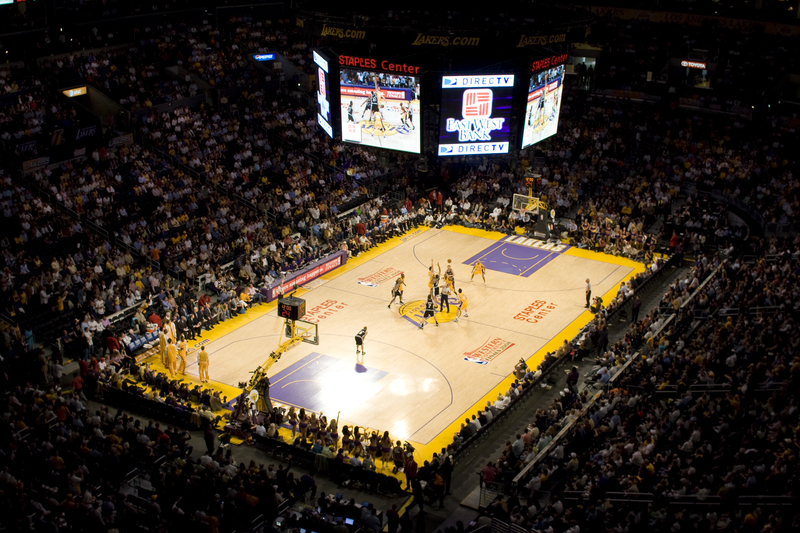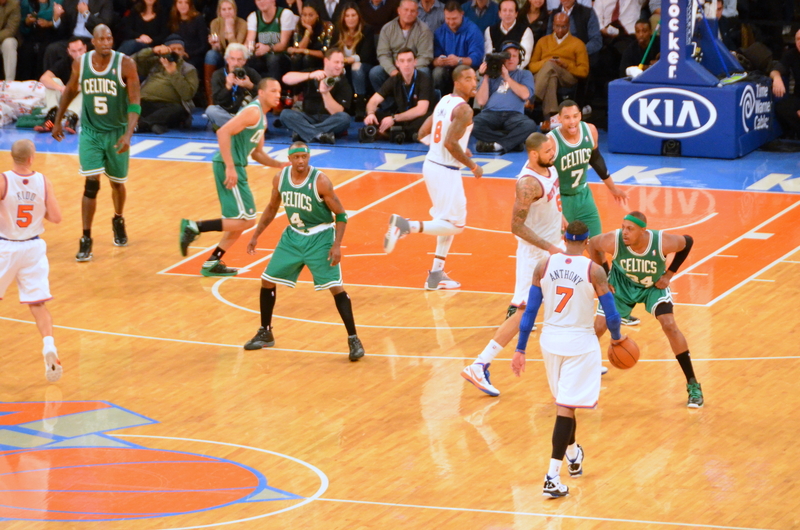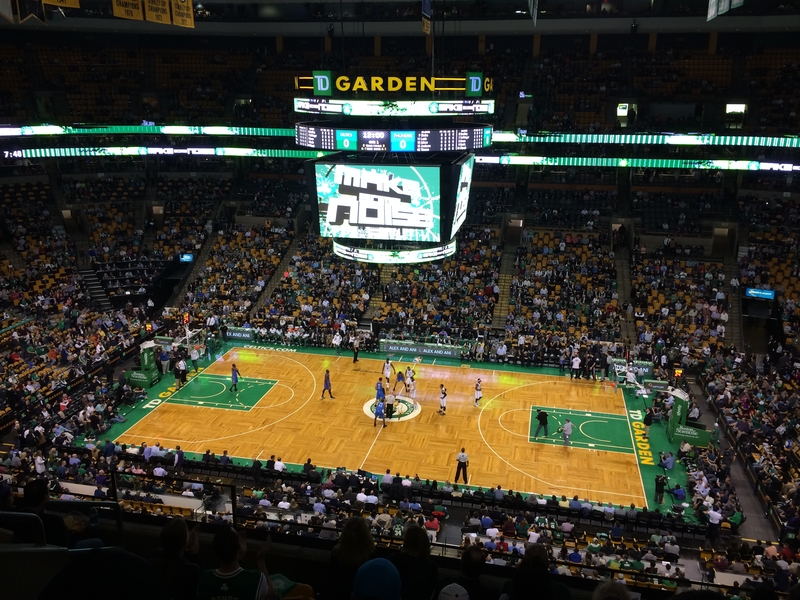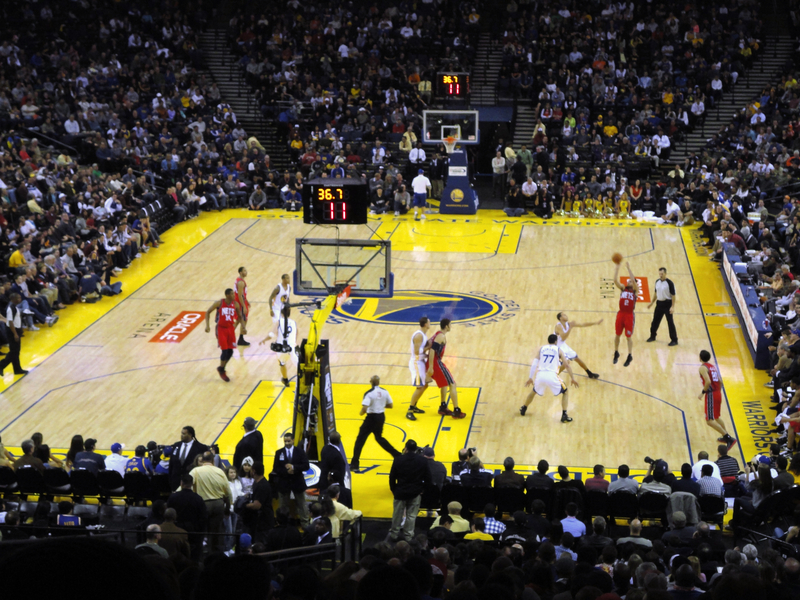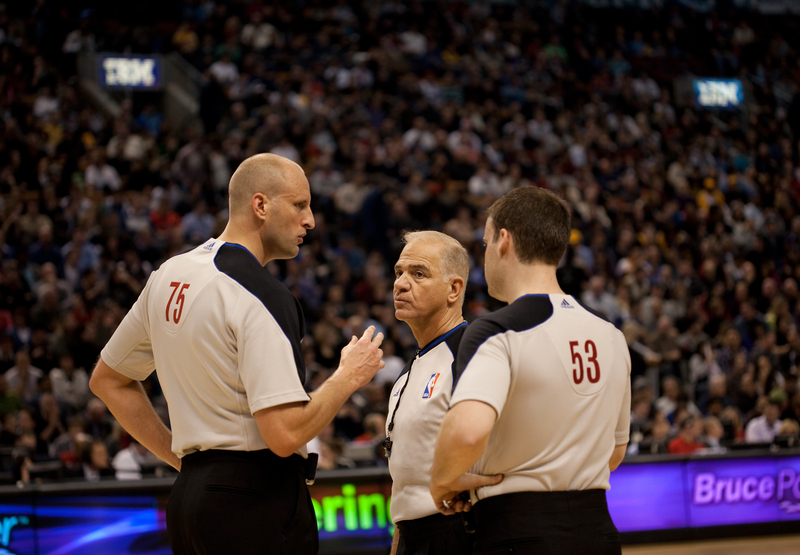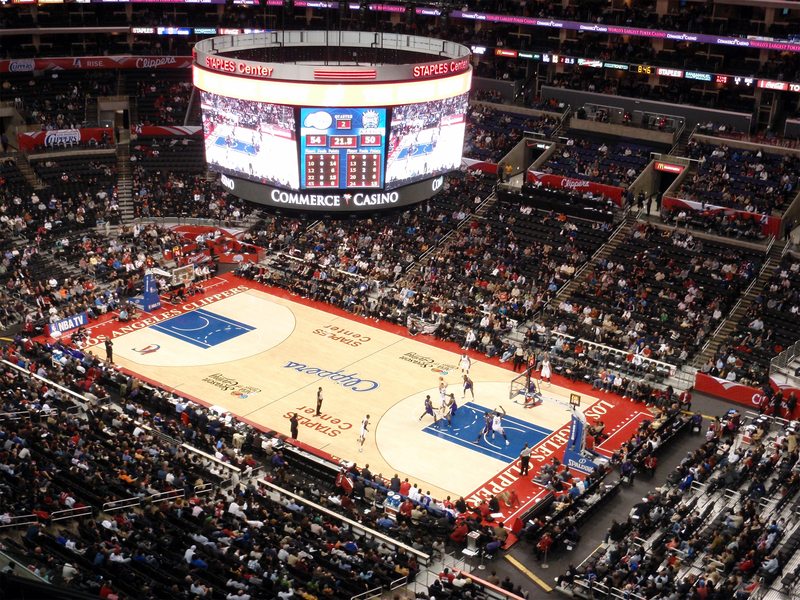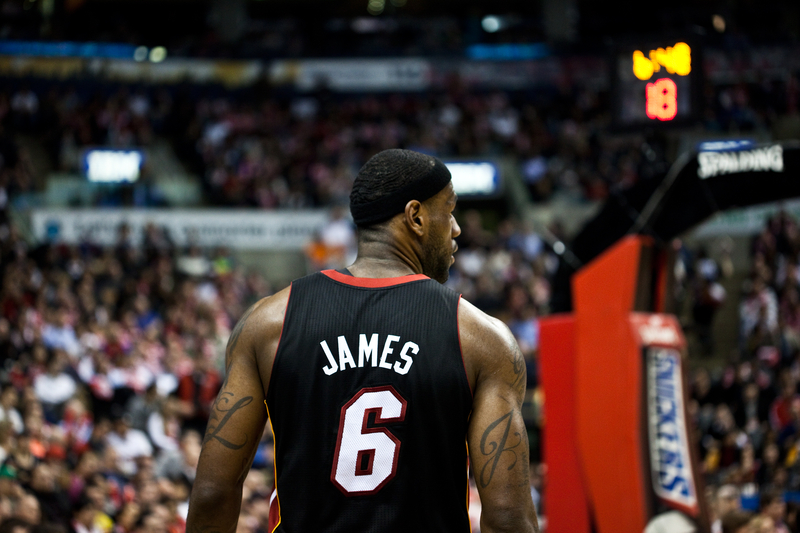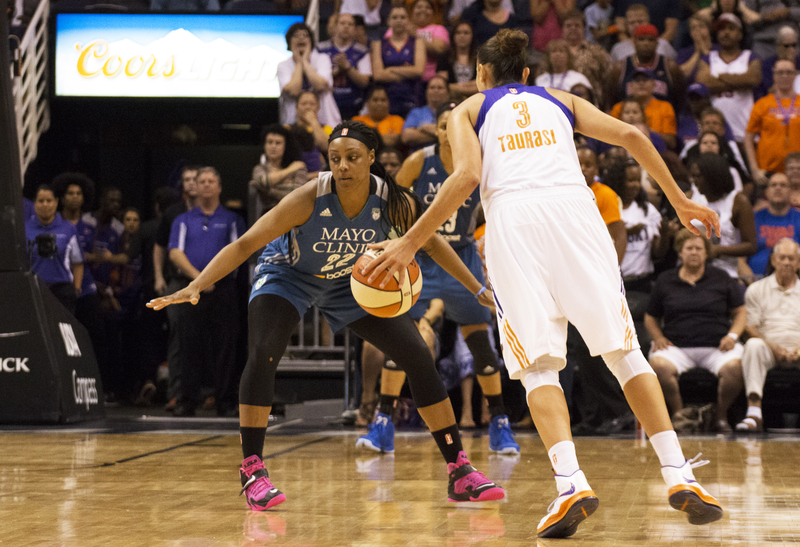Last updated on October 23rd, 2023 at 03:54 pm
In basketball, a backcourt violation is an infraction committed by the offensive team in their own half of the court. This type of violation refers to two minor infractions that keep the game’s pace exciting and equalize scoring opportunities. Here is the complete breakdown of a backcourt violation in basketball.
What is the Backcourt?
The backcourt is a team’s defensive zone or the half with their basket. Meanwhile, the frontcourt is the offensive zone or half around the opposing team’s basket. Generally speaking, you will see the home team’s logo in the center of the court that helps separate the two sides.
What are the Two Types of Backcourt Violations in Basketball?
When a team commits a backcourt violation, it’s usually one of two infractions. There is either an eight or ten-second foul or an over-and-back violation.
What is the Eight Second Violation in Basketball?
The eight-second rule is the first backcourt violation. This rule states that a team possessing the ball must dribble in under eight seconds from the backcourt to the frontcourt. This rule only applies to professional leagues, like the NBA or FIBA.
In the NCAA, WNBA, and high school basketball, teams have a 10 second time limit to cross the halfcourt line. Commonly, you will hear fans refer to this backcourt violation rule as either the eight or ten-second rule.
What is the Over and Back Violation in Basketball?
Since teams have to cover so much ground in such a short time, some players may feel the pressure to pass frequently. The over and back violation restricts where a player with control of the ball can pass. After a team passes the halfcourt line and establishes frontcourt status, they cannot pass the ball back into the backcourt.
What are the Reasons a Backcourt Violation Call Won’t Occur?
There are some situations where teams may not receive a backcourt violation. For example, if a foul causes a stoppage of time, players may have additional time to cross halfcourt with the ball. Similarly, if a team throws the ball inbound at center court, they may pass it to a player in their backcourt without causing a violation. This throw is a throw-in during a basketball game and results from a foul.
What Happens When a Team Commits a Backcourt Violation?
The penalty for backcourt violations is relatively mild compared to other infractions during a basketball game. When a backcourt violation occurs, the game time stops, and the offensive team relinquishes control of the ball to the defensive team on the court. The team receiving the ball can then throw it in at the halfcourt line to start their offensive drive to resume play.
Why Are Backcourt Violations Important in Basketball?
Backcourt violations are essential for encouraging offensive possession and scoring in basketball. Without these plays, it would be possible for offensive players to pass wherever they want, spreading defensive teams thin.
How Do Teams Draw up Defensive Plays in the Backcourt?
Specific teams use the over and back rule to their advantage by implementing defensive strategies that limit passing opportunities. These include the half and full-court traps. These schemes involve defensive players blocking or trapping offensive players in their backcourt, limiting how many teammates can receive a pass.
Running these defensive schemes can force offensive players to take a risky shot at the basket or attempt a pass that would draw a backcourt violation. Since these plays often result in a turnover, it’s an excellent way for players to defend their half of the court.
Does the WNBA, NCAA, and High School Still Use the 10-Second Rule?
The WNBA, NCAA, and high school basketball have a 10-second rule. Today, they use the shot clock to count the ten seconds, which helps fans and referees see how much time remains before a violation. Players and refs hardly miss the call since this rule follows the shot clock, and everyone can see it.
Conclusion: What is a Backcourt Violation in Basketball?
Like most violations in basketball, the two rules that fall under the category of backcourt violations are put in place to keep the game moving and encourage teams to make more offensive plays. While these violations don’t result in free throws, like other fouls might, they can have severe consequences for groups.
If a player or team commits a backcourt violation, they have to give up control of the ball. Giving up the ball gives teams on defense an excellent opportunity to change the game’s pace.
Next time you watch basketball, pay attention to how much time it takes a player to cross midcourt with the ball and where they pass. You might catch a backcourt violation yourself!
Similar Posts
What is a Triple-Double in Basketball?
What is a Screen in Basketball?
What is a Free Throw in Basketball?
What Does a Bonus Mean in Basketball?
What Does ISO Mean in Basketball?
What is an Assist in Basketball?
How Long is Halftime in the NBA?
What is a Double Dribble in Basketball?
How Tall is a Basketball Hoop?
What is Goaltending in Basketball?
Greg Kristan, owner of The Stadium Reviews, LLC and TM Blast, LLC, brings his extensive experience visiting over half of the MLB ballparks, along with numerous MLS, NHL, NBA, and NFL venues, to provide in-depth coverage on the bag policy, food options, and parking. He has also been interviewed about his experiences on several sports podcasts.

